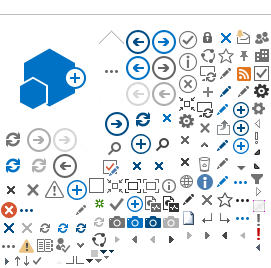On this page
- Clinical guidance documents
-
Clinical support
-
Tools and links for clinicians
- Information for the community
There are nearly 25,000 people across NSW receiving treatment for opioid dependence. Long-acting opioids, provided as regular doses, can prevent symptoms of withdrawal and reduce cravings for opioid drugs.
The NSW Opioid Treatment Program (OTP) provides a framework in which a range of Schedule 8 medicines can be prescribed or supplied for this purpose. Medicines are available on the Pharmaceutical Benefits Scheme (PBS) under an s100 opioid-dependence listing. Treatment is delivered by local health districts, correctional facilities, general practice, private clinics, non-government organisations, Aboriginal community-controlled health organisations and community pharmacies.
Clinical guidance documents
These documents were developed to support clinical practice in NSW and are aimed at clinicians who are treating people with opioid dependence. They contain guidance on assessment, treatment planning, pharmacotherapy options, and psychosocial interventions.
It is recommended that documents are routinely accessed via the web versions rather than printed and stored to ensure information is up-to-date.
NSW Clinical Guidelines: Treatment of Opioid Dependence 2018
- Comprehensive, evidence-based recommendations for the management of opioid dependence across diverse clinical settings.
2018 full document
- The guidelines are also available in a streamlined version of the full guidelines, offering a quick reference resource for busy practitioners.
2018 abbreviated version
- Note: Updates to the guidelines are anticipated in 2025.
Long-Acting Injectable Buprenorphine (LAIB)
- Updated guidance on the use of LAIB, including clinical considerations, administration protocols, and patient suitability.
- It is also available in a streamlined version of the full guidelines, offering a quick reference resource for busy practitioners.
- Access both versions
Nitazenes dependence – withdrawal and induction to treatment
- Expert consensus on managing withdrawal and initiating treatment for individuals who use high-potency synthetic opioids like nitazenes. Advice includes recommendations on appropriate treatment settings, medication options, sample testing, the provision of take-home naloxone and overdose advice, and links to safety notices regarding drugs of concern.
- This document will be updated as new evidence emerges to ensure alignment with the latest research and clinical best practices. Consensus guide
Transferring patients from methadone to buprenorphine
Tools and links for clinicians
Training and continuous improvement
Links to regulatory and prescription information
Administration and supply
Find a participating community pharmacy
Overdose prevention and naloxone
Naloxone is a life-saving medicine that temporarily reverses opioid overdose.
Naloxone is available to anyone in the community for free and without a prescription from participating community pharmacies, public health services, non-government and private services. Two formulations are available; a pre-filled syringe for injection (Prenoxad®) and an intranasal spray (Nyxoid®).
-
Find naloxone for free near you. Members of the public can also
order naloxone online from NUAA.
- Guides for how to use both types of naloxone are available in a plain-English versions with pictures, as well as a range of languages. See
Nyxoid® or
Prenoxad®.
Find out more about the Take Home Naloxone Program
Information for the community
- NSW Users and AIDS Association (NUAA) is a peer-based drug user organisation that is governed, staffed and led by people with lived or living experience of drug use.
NUAA has lots of good information
about opioid dependence treatment and other resources.
- You can learn more about different drugs and find out what support is available to you at
YourRoom
